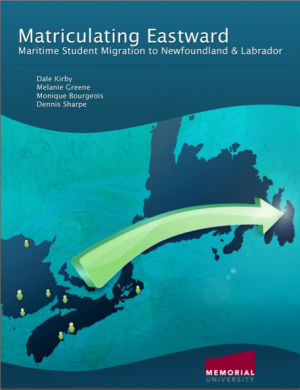 There was an interesting study out last month from a group of scholars at Memorial University of Newfoundland (MUN), led by Education Professor and Canadian Higher Education über-blogger Dale Kirby, called Matriculating Eastward . With MUN’s out-of-province student numbers skyrocketing in recent years (intake from the other Atlantic provinces has risen fivefold since 2002), the report used both quantitative and qualitative methods to examine the reasons that out-of-province students chose Memorial as their place of study.
There was an interesting study out last month from a group of scholars at Memorial University of Newfoundland (MUN), led by Education Professor and Canadian Higher Education über-blogger Dale Kirby, called Matriculating Eastward . With MUN’s out-of-province student numbers skyrocketing in recent years (intake from the other Atlantic provinces has risen fivefold since 2002), the report used both quantitative and qualitative methods to examine the reasons that out-of-province students chose Memorial as their place of study.Not surprisingly, cost emerges as the number one factor – with fees having dropped over 35% in real terms over the last decade, MUN has become the region’s low-cost education destination. But number two on the list was interesting – availability of program of choice. It’s a hint at least that cost on its own might not be enough to make a school a “destination” – it still needs a degree of comprehensiveness and reputation for quality capacity in order for people to want to go there in the first place.
The study unsurprisingly concludes that keeping MUN a low-cost environment is key to its remaining competitive for out-of-province students. But that’s not something the university can decide on its own – MUN’s tuition is a function of provincial government largesse. And the province’s return on investment for massively subsidizing out-of-province students depends to a large degree on whether or not they choose to stay in the province after graduation. Here, the study’s results are less encouraging – migrant students’ willingness to consider staying in the province after graduation is not much better than “neutral” (3.3 on a scale of 1 to 5, where 5 is “strongly agree”).
It’s an argument at least in favour of a two-tier tuition scheme, with one rate for home students and another for immigrants who are (arguably) just subsidy-shopping. As long as oil revenues stay healthy, it’s hard to see Newfoundland changing course. But if budget cuts ever loom, there’s every chance for Newfoundland could imitate Quebec and make visiting students pay in order to maintain locals’ privileges.

 Tweet this post
Tweet this post
